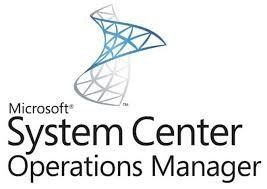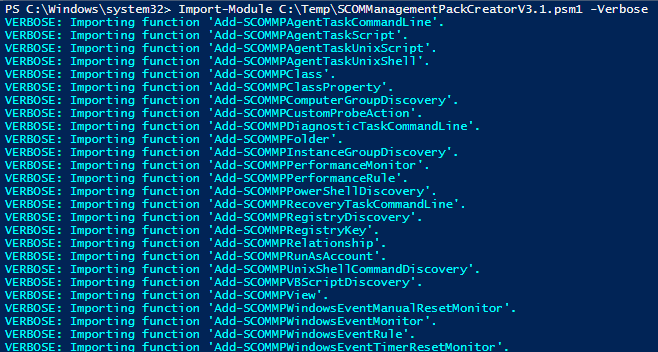SCOM Management Pack Creator PS Module Officially Released
Build Management Packs even quicker than the previous version!
The long waited and anticipated release of the SCOM Management Pack Creator latest version is now here
Though there have been some drastic changes to this release, especially now its no longer going by the original "V3.0" name as its now a fully blown PowerShell Module.
Another version will be released which will specifically be the wizard version currently known as the "SCOM Management Pack Creator V2.0"
Where to Download
You can download it right here https://irp-cdn.multiscreensite.com/c1f89e50/files/uploaded/SCOM%20Management%20Pack%20Creator%20PS%...
Contains the full guide and template on how to build the Management Pack completely
New Features
Now an Importable Module!
The SCOM Management Pack Creator latest version is now a fully importable module.
So this means that you can now use CMDlets to build out the entire management pack and can perform not only each part or the whole management pack individually, this applies to management packs which would use custom classes as well as default management packs which would be applicable to i.e. WindowsComputer classes etc
The wizard functions which you see in the previous version still works alongside this module. So you have the option to run the function which can build the MP in a Wizard fashion or you can run functions individually to create any part of the management pack you require.
Functions also contain help messages now when prompted press !? for more information.
New Powerful function - Get-SCOMClassID CMDLetNew Powerful function - Get-SCOMClassID CMDLet
A new function has been added which is called Get-SCOMClassID
The power of this function is with in conjunction to completing management pack builds on different functions which accept a pipeline and also accept a parameter with pipeline property name.
For example this command has switches to obtain the following;
- File which contains the Classes
- File which contains the folder classes
- File which contains the Monitors and Rules
Output Files now in MPX files
The previous version had the outputs in .XML files, which was a good way to copy the output and place into your Visual Studio Project.
Now this has been changed, so now all of the outputs will be in .MPX files which allows you to import the MPX file directly into your Visual Studio Management Pack project without having to copy anything across.
Multiple Discoveries or Multiple Monitors can be added to one .MPX file
Though the previous version multiple discoveries and monitors could be created. But the only limitation was that they could only contain one discovery or monitor per .XML file.
This has now been changed, so now in a wizard form or function form you can now add as many as you want into one .MPX file which makes it a lot easier when creating discoveries or monitors.
Additional Monitors Added
The following new monitors have been added to the PowerShell Module
- Windows Event Timer Reset
- Windows Event Manual Reset
Creation of Tasks
You can now create Agent Based Tasks in the module and assign them to the classes which you have created within your management pack
Creation of Diagnostic/Recovery Tasks
You can now create Diagnostic and Recovery tasks which can be added to any of the monitors which you have.
Advancements on UNIX/Linux Support
There is now huge advancements made on the UNIX/Linux functions in this module.
- Add-SCOMMPUnixShellCommandDiscovery - You can now discover UNIX objects using a shell command
- Add-SCOMMPUnixLogFileRule - You can now monitor the log files on UNIX computers
- Add-SCOMMPAgentTaskUnixShell - You can now create agent based tasks for your UNIX Computers
- Add-SCOMMPAgentTaskUnixScript - You can now create agent based tasks which use UNIX scripts.
Product Knowledge Article Linking
Each Monitor or Discovery you create can now have a Knowledge base article attached it. These are optional fields so you can enter a null value if you wish for this not to be created.
Each Discovery or Monitor will contain a switch which will allow you to add words to your knowledgebase articles alongside comments which will illustrate where you can add further information to them
Bug Fixes
- Add-SCOMMPWindowsPowerShellScriptRule - Part spelling mistakes or misplacements have now been corrected.
- Discoveries contained properties of classes which had no TypeID attached to them
- Script or function would fail if Null Value was given.
- HelpMessages now added to each Cmdlet using "!?" to find more information out












